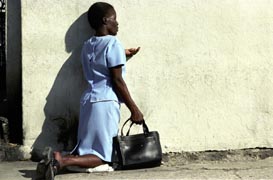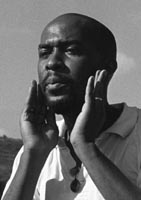An interview with Michelange Quay
First of all, I would like to know your impressions about the Milano Film Festival. Events like this are not so common in Italy, it would be interesting to know the opinion of a film-maker who comes from a foreign country.
What a festival! I′d never been to a film festival where the staff were so involved, so enthusiastic about cinema. Milano Film Festival is an extremely generous, positive, and youthful atmosphere that I think penetrated the entire event, the public, the filmmakers… It′s rare to be at a festival where everyone has seen ALL the films. It′s also rare that a festival presents every director before his film and that the directors and some staff house together, like we did at the BINDA, House of Directors (I had some great conversations and made new friends. Its also rare to see shorts taken seriously) such a good selection of short films. If events like this are uncommon in Italy, I′m sure they are elsewhere as well!
As the winner of the festival, we would like to know something more about your artistic background: how did you started your career as a film director?
I spent my whole childhood drawing comic books and stumbled onto films by accident in university. I′ve been hooked ever since.
Your short movie faces very deep thematics. It seems autobiographic…
The film seems to describes the global financial markets in the language of some all powerful tropical Jehovah, an all pervasive process, that is everywhere, and eats, chews, digests and shits everything and everyone, the filmmaker, the filmmaker′s father, the film itself, and eventually, the audience watching it.
The way you used the biblical language to speak about contemporary life sounds like a parody of the Gospel. On the other side you describe rites and ancient religions, quite renewed for capitalism. Could you explain more clearly your ideas about religion?
I don′t know if I have any particular theories, but I do like the sound of religion, the flavour of ritual, incantation, ceremony, in all its glory, solemnity and kitsch. Maybe the church and the cinema have a lot in common. In Latin the word religion suggests the idea of linking thinks together, and the sermon of this film links the North and the South, reality and fiction, links the voracious world economy to the local Haitian economy, in some crazy Old Testament baptism. Going to the cinema can be like a waking dream and, for me, this ritual aspect is as important because perhaps the unconscious roots of film, like theatre, music and the other arts, are in religion.
Above all your short movie speaks about differences between first and third world, it denounces capitalism and declares its victims, but in the same time it sounds like a proud declaration: le cochon créole is what we eat…
The film illustrates a dynamic, a dialectic. On one hand, you have a global economy that eats and is eaten, and on the other this local symbol, the Creole Pig who claims to be the one doing the eating, refusing this dominance, claiming to be older, even eternal, invincible, before and after the market. There′s almost a musical call and a response, Who eats, who is eaten? Who eats, who is eaten?, over and over again.
Why did you choose the Creole pig as such a powerful symbol in your film? Could you unfold your metaphor for our readers?

The Creole pig has been a powerful symbol since the porcocide of the species in the late 70s. In Haiti, a country that throughout its history has suffered for its independence, it represents a martyrdom, yet another symbol of the price of sovereignty. Perhaps this Creole pig can be a universal symbol at this present moment where in so many countries, with every referendum, with every reform, with every regime change, there is a sense that one′s identity is being sacrificed in the name of who knows what.
In your short film the most shocking scenes are those in which pigs are killed. Where and how did you shot them, and which reaction you think the spectator may have watching at those killings? Better, which reaction/thoughts/ideas you want to persuade?
The place where I shot those scenes is an outdoor slaughter yard, behind a market place in the capital of Haiti, Port Au Prince, and the extreme desolation of this location struck me: as if the place was some hell′s antechamber, a limbo, a place that had a symbolic, archetypal feeling. The sensation that I felt, and perhaps the audience feels it to, is that this place is the slaughter yard behind the market place that is our civilization.
The final camera movement is very suggestive, how did you carry it out?
I won′t say! Otherwise it won′t be suggestive anymore!
• Torna alla versione italiana
• Vai al resoconto sul Milano Film Festival 9
• Vai all’intervista con Giovanni Eccher
• Vai all’intervista con Andrea Costantino
• Vai all’intervista con Urs Domingo Gnad
• An interview withUrs Domingo Gnad
• Vai all’intervista con Giacomo Gatti
A cura di
incontri ravvicinati ::